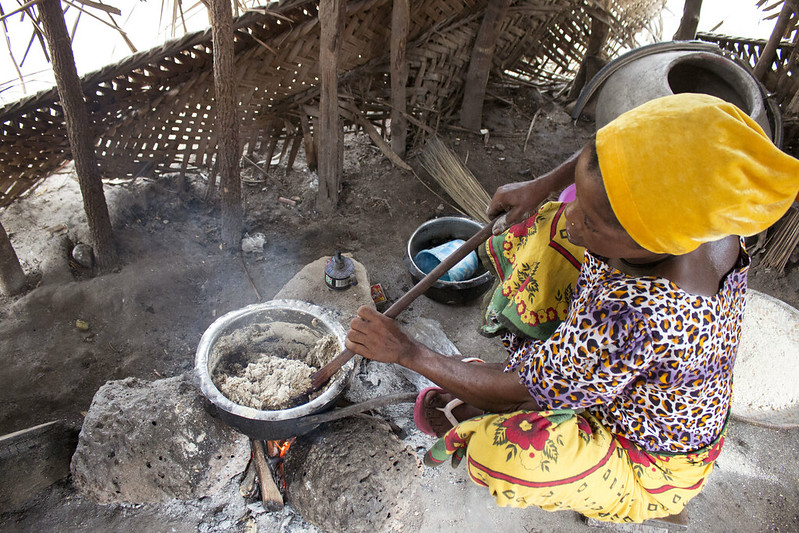Did you know that people can suffer from malnutrition even when they have enough food? Like in many parts of the world, micronutrient deficiency, the lack of essential vitamins and minerals, is a big problem in Eastern Africa where most people don’t feel hungry as we know it, but malnutrition hinders their health and vitality.
Low consumption of nutritious food is the main cause of hidden hunger and it causes devastating lifelong health consequences as well as poor physical and intellectual development. Young children and women of reproductive age living in low-income countries are the most vulnerable to the effects of hidden hunger.
A diverse diet is the best tool for combatting hidden hunger and malnutrition. However, most of the low-income urban consumers in Eastern African countries struggle to access diverse and nutritious food. Inadequate income forces them to rely on processed food such as maize flour, which is a good source of calories but scarce in nutrition. Today, food processing companies provide more than half of the food consumed by low-income urban families in the region. Therefore, working together with these companies is key for improving health amongst Eastern African low-income consumers.
Paradoxically, many of these low-nutrient processed foods are made using locally available nutritious traditional grains and legumes. So, how come the food made from nutrient-dense supplies ends up being so low in micronutrients? The answer is in how the raw material is treated on the way from farm to fork. For example, grains can be stripped of nutrients if dried uncontrollably after harvest. Moving along the value chain, polishing rice or refining wheat can lead to 60-90 percent loss of micronutrients. These processing practices exemplify how staple foods turns into sources of empty calories and encourage hidden hunger.
Sharing best practices with food companies to improve the nutritional value of their products
Every step in the grain’s value chain contributes to the nutritive value of the final product. We created an infographic explaining what farmers, processors, traders, transporting companies and consumers can do to preserve the highest nutritional content of traditional grains when they reach the plate.
It all starts with nutrient-rich soils and high-quality seeds from traditional grains varieties. It is not possible to harvest good crops with bad seeds planted in poor soils. Cooperatives can help farmers with seeds supplies, as well as well as with the adoption of climate-smart agricultural practices, like agroforestry or biochar. Once farmers have cultivated nutrient-rich crops, harvesting must consider not only how the produce looks to the eye but also thinking about all micronutrients that they contain inside. To do this farmers need to ensure their grains are properly cleaned, dried and stored. If grains are not stored in clean, dry and cool conditions, they might be attacked by insects, mould and bacteria and even start their germination process. Aggregators and transporters, therefore, play an important role in the value chain not only because they connect farmers with food processors, but also because they manage transportation and storage.
When grains are delivered to a food processing facility, food companies need to not only ensure preservation, but also use processing methods that enhance the bioavailability of micronutrients. An example of such a processing method is hydrothermal treatment. This treatment unlocks nutrients in grains and allows for easy absorption by the human body. When companies employ a hydrothermal process, they don’t need to enrich their food products with vitamins and minerals. Hydrothermal processing takes care of it by preserving naturally occurring nutrients in grains and helps to comply with national requirements. Tasty, long-lasting, and nutritive whole grain-based products can be produced inexpensively and therefore have affordable prices for low-income consumers.
Over the upcoming months, our SIANI Expert Group will support food processing companies to red-flag critical points in their value chains, improve the nutritional quality of raw materials and develop learning materials and training for the hydrothermal processing that facilitates natural absorption of grains’ micronutrients. This work will include online training on hidden hunger and hydrothermal processes, which will soon be launched on our website and media channels. This will support food companies in transforming risks into opportunities whilst also fighting hidden hunger amongst their customers.
Processing can compromise the nutritional value of our food, generating hidden hunger. To address this issue our Expert Group comprising of Inclusive Business Sweden, Hidden in Grains and BioInnovate Africa is sharing practical knowledge with Eastern African local food companies and policy makers in processing methods that can help produce nutritious food. For more information about our SIANI Expert Group please contact Ana Pérez Aponte.
